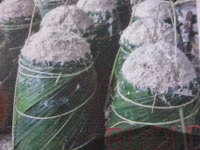Sago
cultivation, producing carbohydrates and bio-ethanol
RAISING SAGO This time I will explain how the cultivation of sago
Let's we learn.
 As we know , that the sago palm is a source of carbohydrates needed for body , but there are other benefits from the sago plant producing bio - ethanol . sago plants also produce bio-ethanol materials. It means two basic human needs, there are food and fuel can be produced through tree planting sago. In Indonesia, in the province of Riau Sago is widely available in the District of meranti, Indra Giri Hilir, Siak and Pelalawan.
As we know , that the sago palm is a source of carbohydrates needed for body , but there are other benefits from the sago plant producing bio - ethanol . sago plants also produce bio-ethanol materials. It means two basic human needs, there are food and fuel can be produced through tree planting sago. In Indonesia, in the province of Riau Sago is widely available in the District of meranti, Indra Giri Hilir, Siak and Pelalawan. Sago is a plant that a lot of benefits. Sago has an excellent nutrient for health. Ainya levels reached 13.2%, 1.2% crude protein, 0.4% fat 6.2% crude fiber, 4.1% and Abu soluble carbohydrate sebear 88.2%.
Sago palms can be grown in areas with rainfall hujannoptimal between 2000-4000 mm / year. Sago grows in freshwater marshes or peat swamp areas and in areas along the river.
Sago seeds can be obtained from the shoots. Separation was performed on a woody neck area. While the roots trimmed 5 cm. Before planting, leaf midrib need to be trimmed. The goal is to reduce evaporation leaves. Sago seeds should be planted during the rainy season with a hole diameter of 30 cm and a spacing of 8x8 m.
Treatment in the first thing done was weeding, fertilizing. Sago palms can be harvested at the age of 10-12 years. How sago stems cut as close to the root, then cut again into 8-10 pieces. Sago bark off and on and then insert it into the machine shredded. The process will produce sago flour wet masi (dregs, sediment, and other impurities). Further in tamping in a tub filled with water .. This step is done to separate the pulp and starch deposition. After the starch precipitate is filtered, put it in the oven, for at dry for 4 hours. Finished drying sago flour is obtained that is ready for consumption.
Thank's for read...



